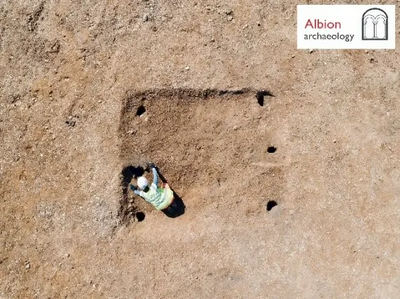Bedford Borough Council celebrates local heritage

Following high levels of interest from residents, Bedford Borough Council are highlighting some of the recent exciting archaeological findings from the local area.
The Council's Historic Environment team provides specialist advice upon archaeological matters, including investigations undertaken in connection with planning applications and those conducted for research purposes.
In line with national best practice, the Council advises on the evaluation of sites prior to the determination of a planning application to identify whether any important remains are present which may require preservation on site or investigation ahead of development. The Council will not normally grant planning permission for a development if findings of national significance are identified and cannot be preserved on site.
The Council adds findings to the Historic Environment Record, which is used when considering the impact of new developments. The record is also available publicly to local residents.
Biddenham Site
One excavation on the edge of Biddenham uncovered a number of fascinating archaeological features, which include a middle-to-late Iron Age settlement including enclosures (possibly to keep their animals), at least one round house, large storage pits, a well and small cooking pits, as well as a number of Anglo-Saxon buildings and what is either an oven or kiln.
The excavation also uncovered a large 'hengiform' monument that potentially dates back to the Neolithic or Bronze Age (4000 - 700 BC), highlighting the complex history of Bedford Borough.
Wootton Site
The Historic Environment team also provided advice and guidance on a recent housing development on the land south of Wootton, where excavations revealed a late Iron Age settlement and a cremation cemetery containing 21 cremation burials.
Of the graves excavated, 15 contained near-complete urns and 13 contained additional vessels. The findings provide a valuable local example of burial practices in Bedford Borough at the time of the Roman Conquest of Britain.
Black Cat Roundabout
As well as housing developments, the Council advises on other applications, such as large-scale sand and gravel quarries within the Ouse Valley, including a quarry near the Black Cat Roundabout on the A1.
The excavations identified a riverside landscape rich in human activity with archaeological remains dating from the late Middle Stone Age (Mesolithic) onwards, covering a period of approximately 7000 years.
Notable findings include Prehistoric flint scatters, a Bronze Age working/production area, an Iron Age to early Roman shrine, a Roman farmstead with a cemetery, isolated Anglo-Saxon buildings, and a large riverside enclosure potentially representing the remains of a Viking winter camp.
Clarence Hotel
The Council also advises on urban archaeological sites, such as the redevelopment of the former Clarence Hotel on St Johns Street in Bedford. The site is located on what is likely to have been the main north-to-south road through the town.
The earliest activity on this site included late Saxon quarrying, although the presence of a possible latrine pit suggests a contemporary dwelling nearby. A similar pit from the early medieval period was also found nearby, which was likely to have been associated with the structure and possible domestic activity, suggested by the presence of post-holes and small pits adjacent to a newly dug roadside ditch alongside St John's Street.
The features revealed some exciting finds, including personal domestic objects, which appear to have been lost, broken or discarded by their owners.
Councillor Henry Vann, Portfolio Holder for Town Centres and Planning, said "We have a lot to celebrate when it comes to our local heritage and local history as demonstrated by some of the exciting findings that our Historic Environment team have discovered. I would strongly encourage anyone who is interested in finding out about the History of the local area to look through the Historic Environment Record, visit the Higgins and our Archives and engage with local archaeological and history groups - including for example Bedford Architectural Archaeological & Local History Society - as well as following the Council's social media page where we regularly provide information on local findings."
You can follow Bedford Borough Council on Facebook (@bedfordboroughcouncil), Twitter (@BedfordTweets) and Instagram (@bedfordboroughcouncil).
To find out how to access the Historic Environment Record and to search a list of summary records, visit www.bedford.gov.uk/planning-and-building/historic-environment/historic-environment-record/.